The portion of the Arabian Peninsula that is occupied by Jordan is rather large. The ancient Nabatean ruins of Petra and the place where Jesus Christ is said to have been baptised are just two of the many iconic cultural hotspots that make Jordan one of the few stable enclaves between the more volatile countries of disputed Israel, Iraq, and Syria.
Jordan’s crumbling Roman cities, exquisite Ottoman charm, Persian treasures, and Egyptian relics from long-gone dynasties are only the beginning to reveal themselves when you factor in its extensive history dating back thousands of years to the time of the earliest humans (archaeological findings suggest that even Neanderthals roamed these parts).
However, Jordan is not only about seeing ancient sites; the city of Aqaba on the Red Sea offers world-class diving, while downtown Amman has a thriving nightlife scene and emerging new art.
So, let’s check out some of Jordan’s top attractions, shall we?
1. Petra
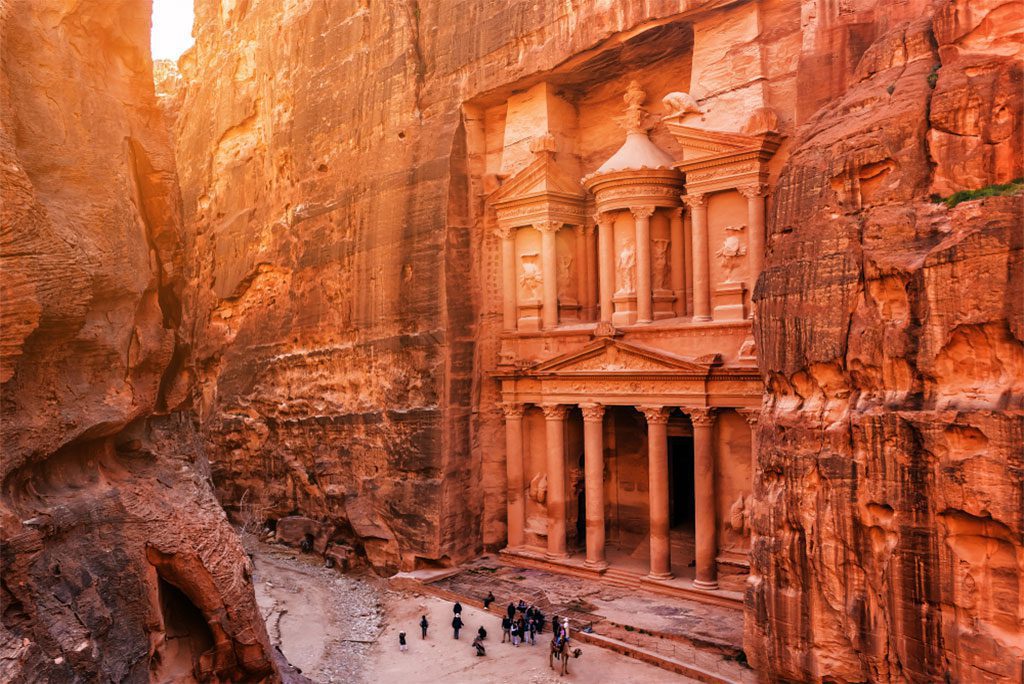
The iconic Al Khazneh, also known as The Treasury, at the ancient city of Petra in Jordan. Image source: Vova Shevchuk/Shutterstock.com
One location in Jordan stands out as the country’s crown jewel because it’s unlike everywhere else in Jordan.
The site, located in the southern heartlands amid the red-hued desert escarpments, was likely initially populated during the fourth century BC. The booming Arabian Nabataean civilisation called this rock-cut treasury and temple complex their ancient capital, and it became one of the region’s most significant commercial centres because of it.
The whole picturesque location is now well-known because of its appearances in blockbuster movies like Indiana Jones, and it is nestled among a network of fascinating siq (tunnels formed by erosion).
In a nutshell, don’t miss out on Petra!
2. Al-Maghtas
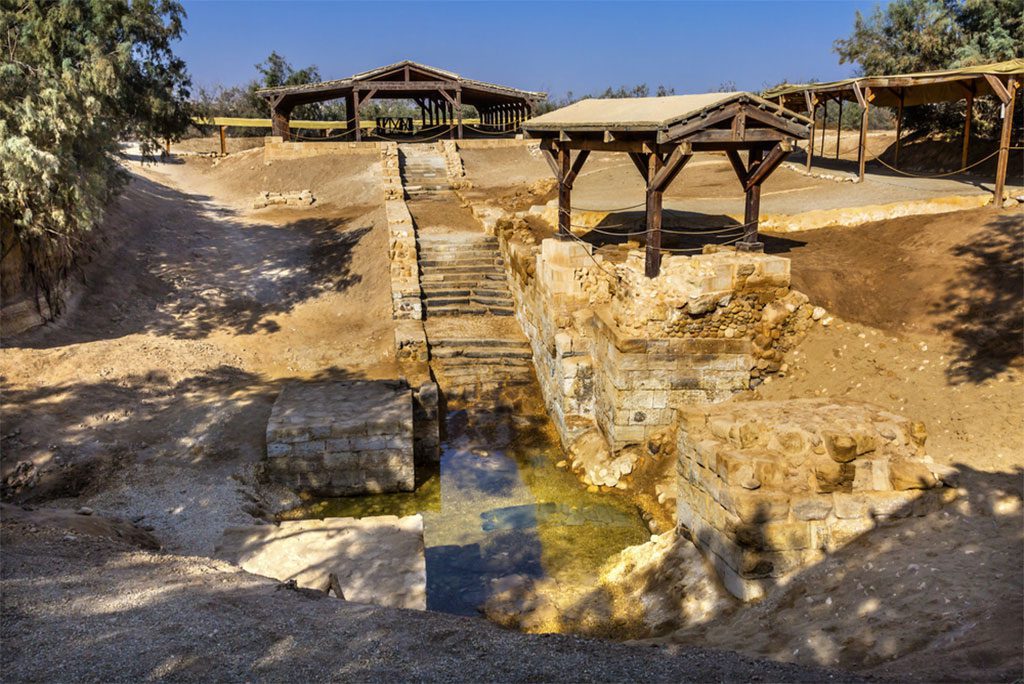
A peaceful view of the baptism site of Jesus at Bethany Beyond the Jordan. Image source: Bill Perry/Shutterstock.com
One of the most significant biblical remnants discovered along the Jordan River is Al-Maghtas, a dusty cluster of minor dig sites and exposed buildings near the Israel-Jordan border in the country’s far east.
UNESCO has designated this area as a World Heritage Site, and it has recently become a popular pilgrimage destination for Christians (with many papal visits in recent decades). It is widely accepted that this is the actual location where Jesus was baptised.
Beyond that, the area has a fascinating collection of Ottoman-and Mamluk-era Orthodox monasteries, as well as Roman buildings and Jewish and Christian holy relics.
3. Amman
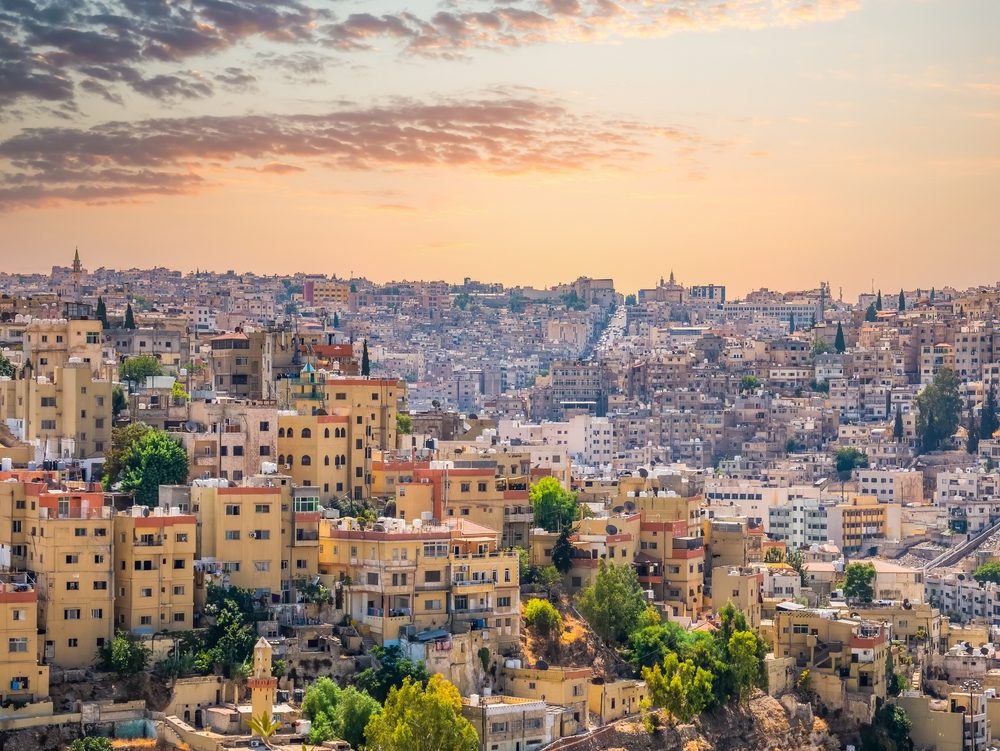
A stunning view of Amman, Jordan’s capital city, with its many apartment buildings during sunset. Image source: Cristi Croitoru/Shutterstock.com
In Amman, you may experience the vibrant rhythms of Arabia and get insight into the many cultural traditions that shape Jordan as a whole.
Visit the Balad neighbourhood, a mosaic of bustling souks and resonating mosque minarets hidden in the maze of streets that wind through the city’s busy downtown.
You may also check out Abdali, where tree-lined streets meet trendy eateries and designer stores.
In addition to the massive Roman Theatre and the scattered Ammonite defences, there is the Jabal al-Qal’a fortress, a jumble of mosques, chapels, and palisades.
4. Jerash
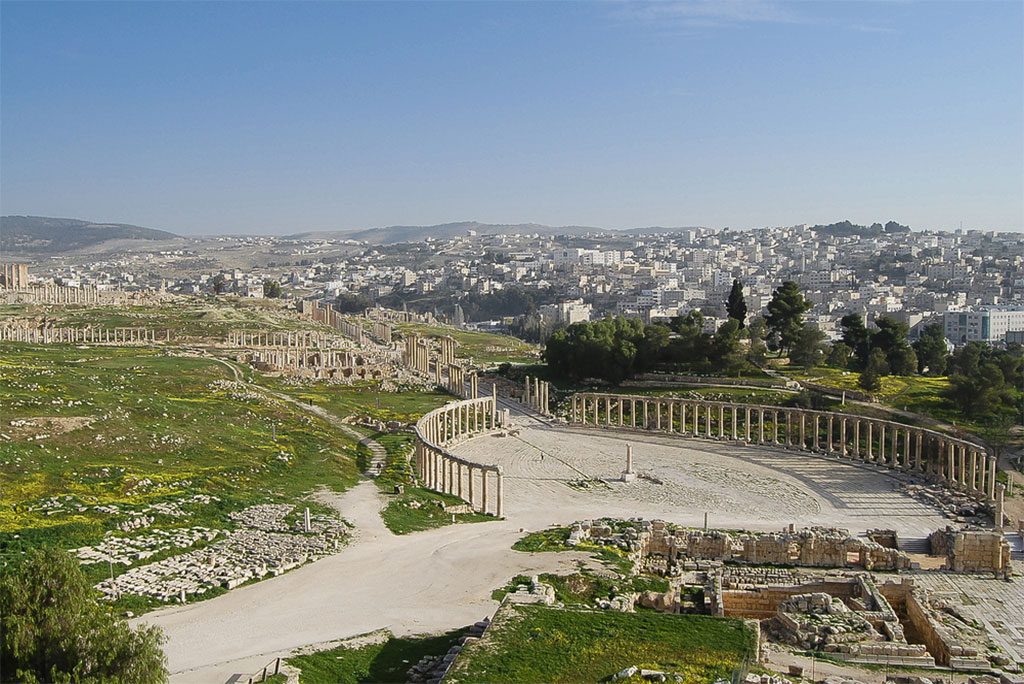
A glimpse of the ancient ruins of Jerash in Jordan. Image source: Adwo/Shutterstock.com
Jerash, located just north of Amman, nearly rivals Petra, the famed rock-cut temple, in terms of the number of tourists that flock there. This is a testament to the overwhelming quantity of history that still remains in the destroyed city of Jerash.
Yes, this eclectic mix of soaring colonnades, ancient forums, interesting temples converted to Byzantine churches, and massive plazas is often considered to be one of the most impressive Roman provincial cities still standing on Earth.
Come and stand where Mediterranean traders formerly hawked their wares, or imagine the cacophony of camel caravans rolling in from the immense Arabian sand sea.
5. Wadi Rum
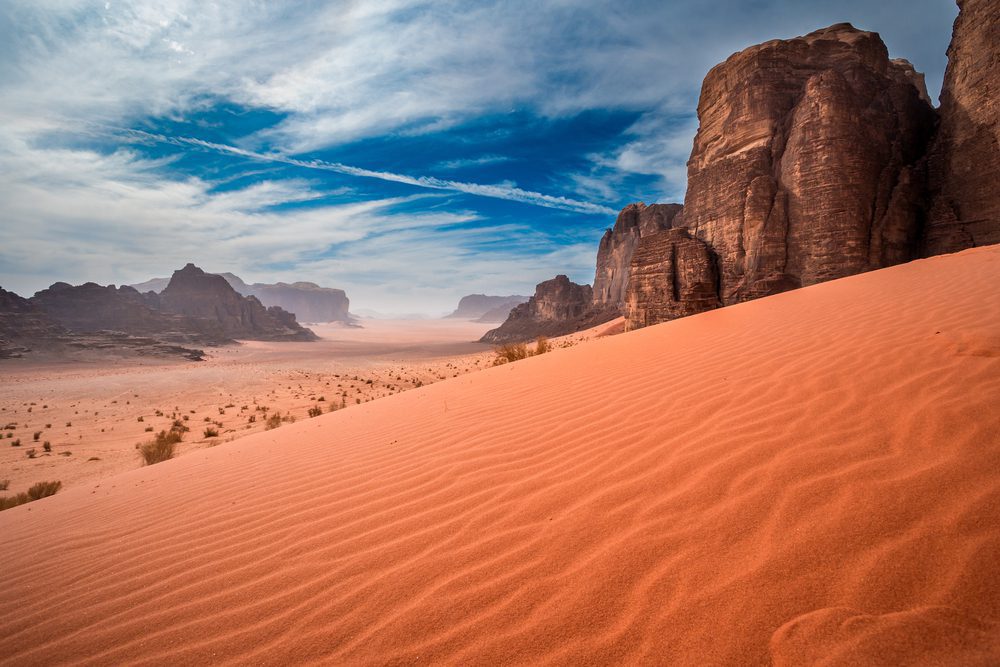
A magnificent view of the sand dunes in Wadi Rum desert in Jordan. Image source: EyesTravelling/Shutterstock.com
The stunning stretches of Wadi Rum in southern Jordan are undoubtedly one of the most awe-inspiring natural beauties in the area, shimmering rich orange and scarlet under the scorching Arabian heat.
The famed valley is typical Jordanian countryside, carved from the rugged limestone escarpments that rise and fall precipitously on the eastern edges of Aqaba.
Massive cliffs of rock ribbed mountains loom in the distance; mythical petroglyphs from ancient Nabatean peoples lurk in the nooks and crannies; camels moan; and climbers dangle precariously from ropes around the hoodoos.
That this was selected as the setting for Lawrence of Arabia in 1962 is hardly a shocker.
6. Dead Sea
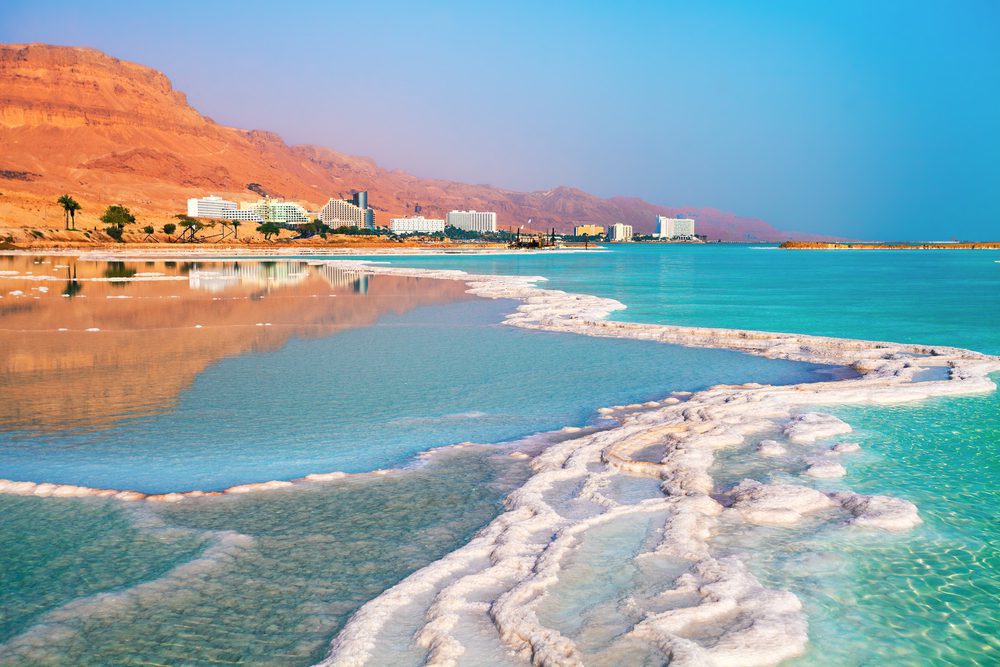
The Dead Sea cuts through the centre of the Middle Eastern Levant.
It’s the world’s lowest and saltiest ocean, and it’s surrounded by towering mountains and ochre-hued sand dunes, all of which shimmer magnificently in the sun of the Arabian peninsula.
The southern part of the sea is occupied with fascinating mineral evaporation pools, constructed for the gathering of carnallite and potassium. The region on the Jordanian banks (the western side lies across the border in Israel) is littered with beaches and tourist hotels.
Nonetheless, what is the most popular pastime? That must be floating lazily on the surface, where the high salinity keeps visitors afloat.
7. Aqaba
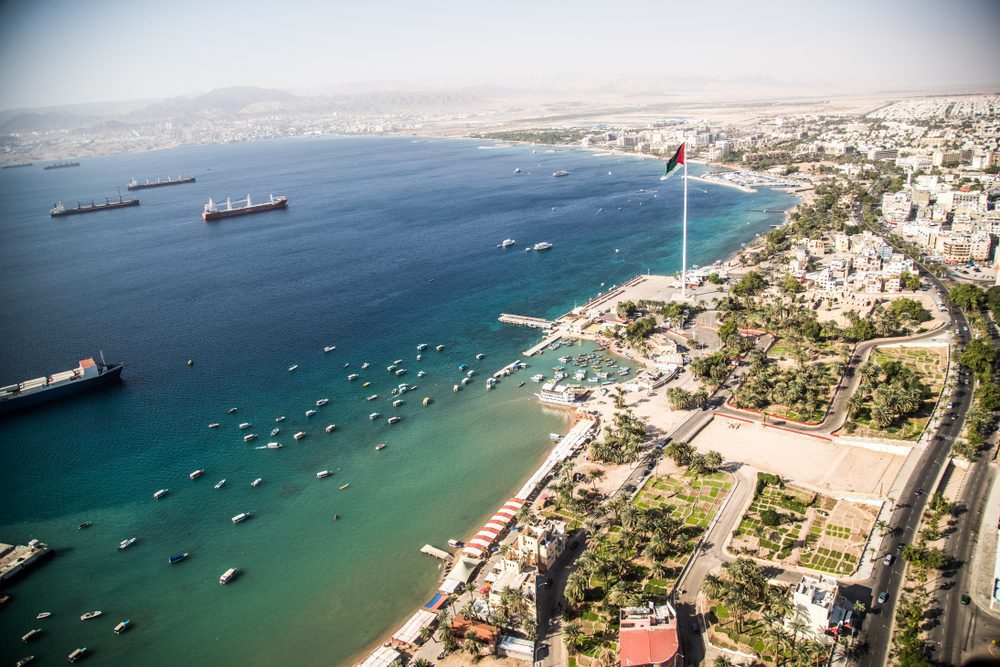
A stunning aerial view of Aqaba city in Jordan. Image source: TarasikJO/Shutterstock.com
The city of Aqaba serves as Jordan’s entry point to the Red Sea.
At its border point, it joins hands with the Israeli tourist town of Eilat to form a potpourri of palm-lined promenades and golden sand beaches.
Widespread renovations and the construction of ultra-luxurious resort hotels in Tala Bay to the south are quickly transforming Aqaba into the ideal Middle Eastern beach getaway.
You may go on a tour of the ancient ruins at Tall Hujayrat Al-Ghuzlan, a visit to the date palms at Shatt Al-Ghandour, or do what most tourists do and go on a SCUBA dive to observe the vibrant reefs that surround the area’s undersea beds.
8. Mujib Nature Reserve
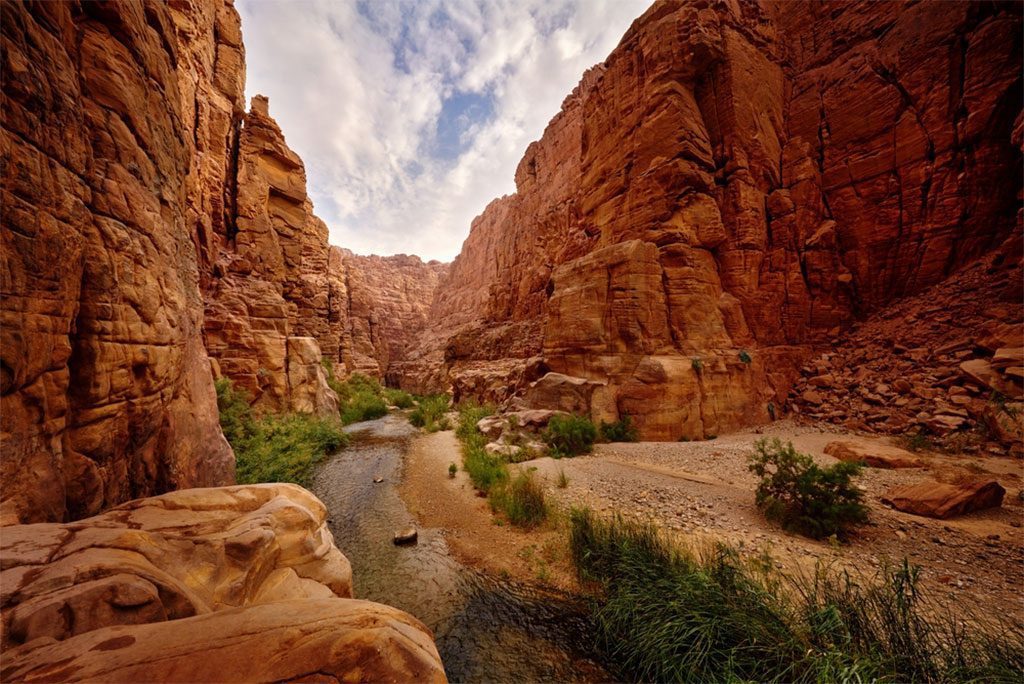
A magnificent view of the Wadi Mujib Biosphere Reserve in Jordan. Image source: Ondrej Prosicky/Shutterstock.com
This huge expanse of northwestern Jordan has the promise of stunning wilderness, with its twisting river valleys and dust-caked gorges; valleys with steep sides carved over the years; and plenty of secret paths hewn from the rocks.
The reserve, which gradually descends to the Dead Sea, has the distinction of being the world’s lowest.
The area has recently been taken over by adventure travellers and outdoor outfitters, who provide activities ranging from daring climbs to heart-pounding rock climbing in the canyons to zipping through the dry and dusty air.
9. Dana Nature Reserve
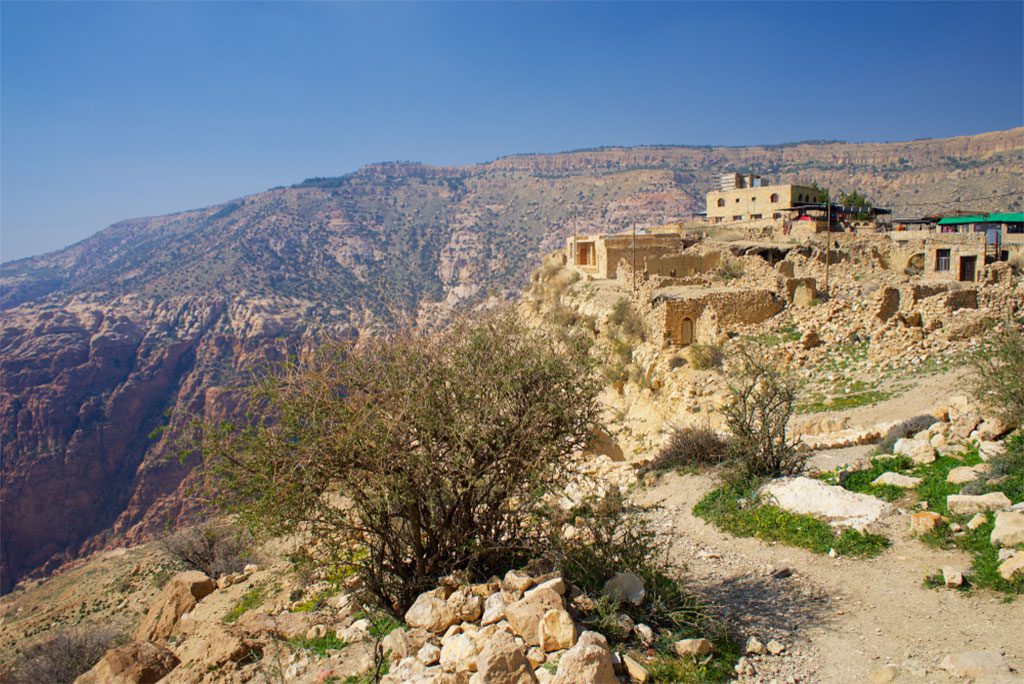
A beautiful view of Dana Village in Jordan’s Nature Reserve. Image source: jn.koste/Shutterstock.com
Visit the wild terrain of the Dana Nature Reserve and go back in time.
Besides being the largest protected area in Jordan, this sweeping panorama of carved valleys and rock-ribbed hills, scrub-dressed mountains, and chiselled peaks topped with crumbling rocks provides a glimpse into the ancient ways of life of the Middle Eastern people who have made this place their home.
After days of trekking through the sandy valleys and seeing rare Nubian ibexes on the ridges, you can either rest your head in a drystone house in one of the historic communities or set up your tent and sleep beneath the stars.
This is fantastic gear for adventurers.
10. Madaba

A breathtaking panoramic view of Madaba city in Jordan. Image source: Piu_Piu/Shutterstock.com
The ancient city of Madaba clings to the side of the well-known King’s Highway as it winds through the arid hills of central Jordan and the country’s rich historical past.
The town is known for its magnificent gold-gilded mosque and a cluster of spiked minarets, but it also conceals some incredible antique mosaics from the time of the Umayyads.
Along with a scattering of ancient Roman remains across town, the Orthodox Saint George Cathedral is home to some very magnificent pieces of art from the Byzantine period.
In the crumbling Ottoman homes that line the main road, you may also try the spicy Jordanian mezze and the aromatic shisha.
11. Ajloun
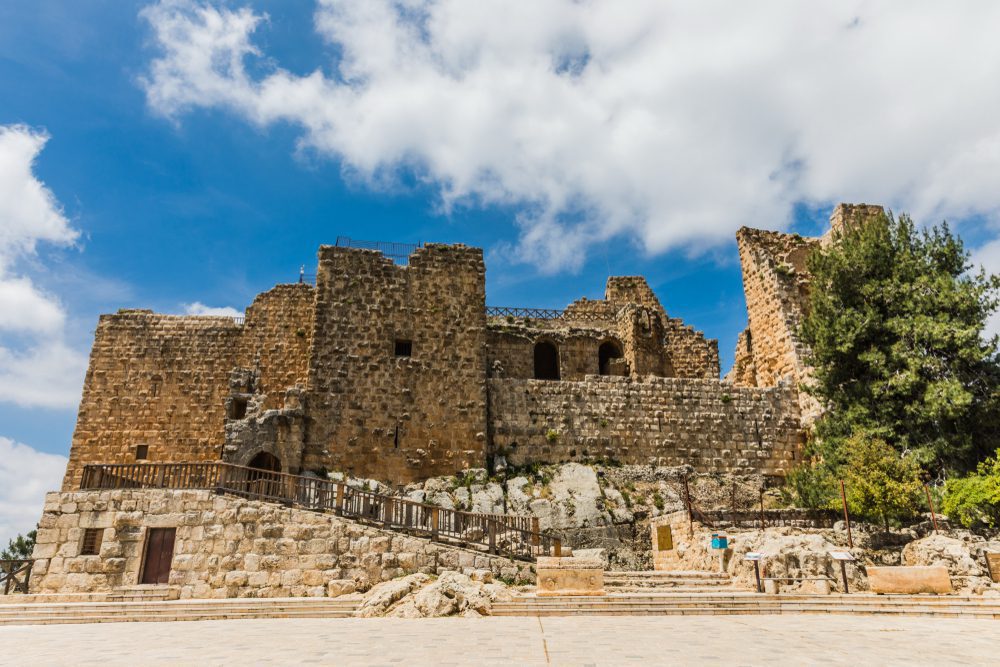
A stunning view of Ajloun Castle in northwestern Jordan. Image source: Damira/Shutterstock.com
The once-great city of Ajloun, which once ruled over the rolling green hills of northern Jordan, is now little more than a scattering of isolated settlements.
The majestic towers of Ajloun Castle serve as a unifying force for all of these smaller communities and draw a large number of tourists.
On the slopes of Jabal Ajlun, far above the wadis that encircle the summit, stands this once-mighty castle, a testament to the Muslim dynasties that ruled the area in the past.
Hikers may now access the inner courtyards by ascending to the site’s historic entrances.
There’s a huge museum inside that details all the many owners the castle has had throughout the years.
12. Irbid
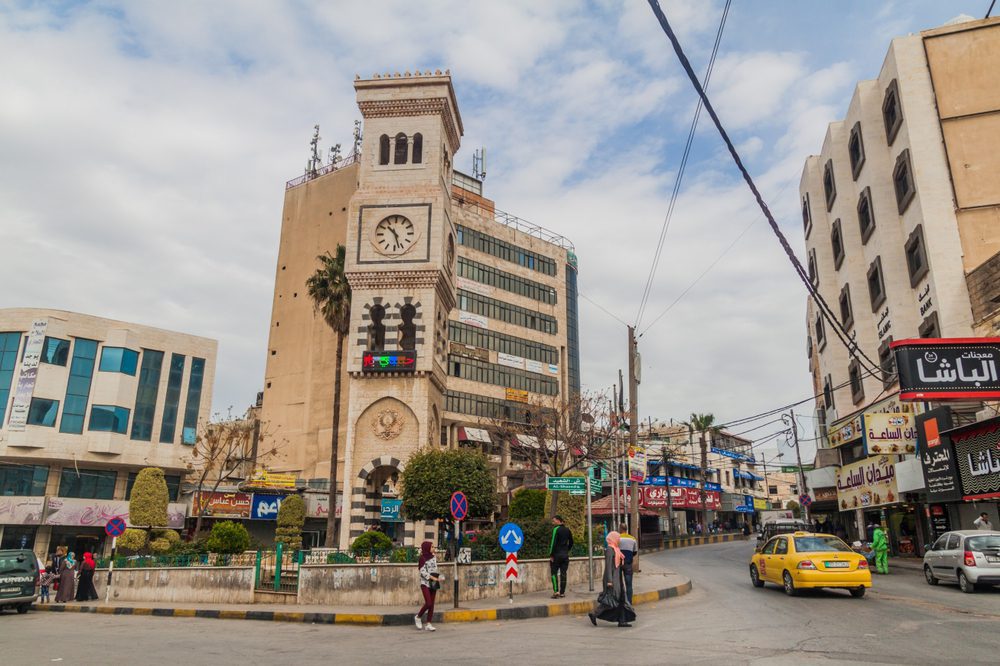
A stunning view of the Clock Tower in the center of Irbid, Jordan. Image source: Matyas Rehak/Shutterstock.com
The city’s success may be attributed in large part to Yarmouk University, a world-renowned institution of higher learning, as well as many others.
The people of this busy northern metropolis take great pride in their reputation for being more forward-thinking and eccentric, and as a result, the atmosphere here is unquestionably young and upbeat.
Many people believe that this area was formerly home to one of the ancient Decapoli (one of the great 10 cities in the Roman east), and there is plenty of interesting archaeological material on display in the local museum to back up this theory.
13. Zarqa
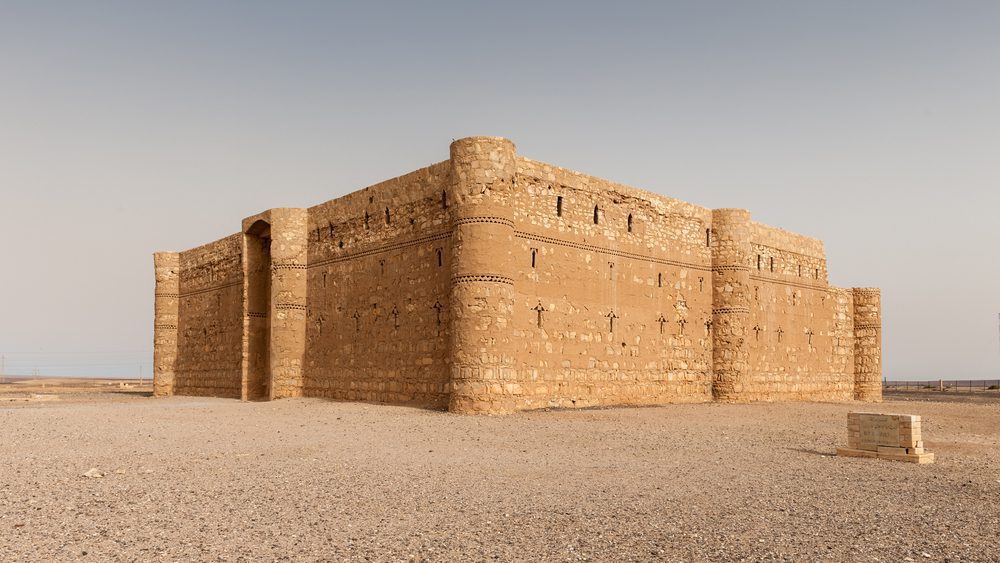
A breathtaking view of Qasr Kharana, one of the best-known desert castles in eastern Jordan. Image source: Anton_Ivanov/Shutterstock.com
Zarqa may not have the iconic archaeological sites or awe-inspiring historical structures of biblical proportions seen in other parts of Jordan, but it does have something else that draws visitors: a gritty, lived-in vibe that exudes the current vitality of the Middle East.
Although the town of Zarqa has been engulfed by the expanding limbs of the city, it has maintained its working-class identity and today has a plethora of bazaars, marketplaces, unique local food stores, teahouses, and other points of interest hidden among the traffic-clogged lanes.
14. Ma’an
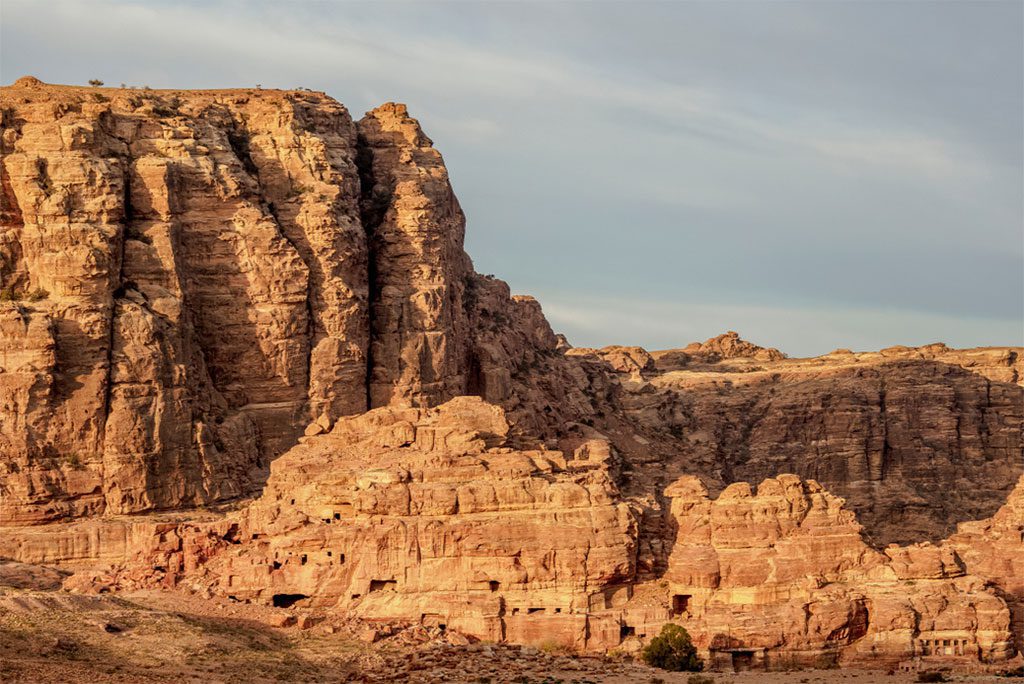
A beautiful landscape view of Petra, located in Ma’an Governorate, Jordan. Image source: Karol Kozlowski/Shutterstock.com
Ma’an, like many of the other historic inns along the twists of the King’s Highway, sits on the cusp between the past and the present.
The ruins of an even earlier village may be observed to the south of the modern city in the desert that has been scorched by the sun.
Ma’an is said to have been established as a Nabatean outpost far from Petra, the major city of that era.
Travelers passing through Jordan on their route to Egypt, Israel, or the Red Sea will find Ma’an to be a convenient stop.
15. Shobak
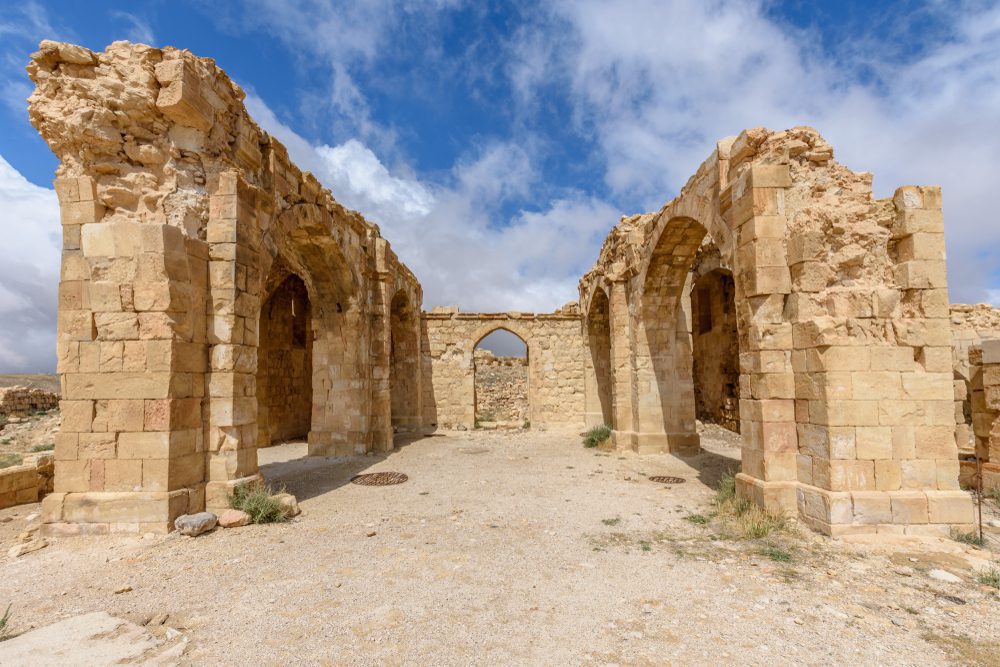
A stunning view of the ruins of a church in the Montreal Castle, also known as Shoubak or Shobak or Shawbak. Image source: Arkady Zakharov/Shutterstock.com
The ancient remains at Shobak are another great destination for the budding historian visiting Jordan. The area is characterised by unending peaks and troughs of dry-mud hills, with the odd scraggly scrub and resilient acacia tree.
Great palisades and ancient arched gates, fittingly called merely the Shobak Castle, lie cracked and deteriorating on the outskirts of the magnificent Dana Reserve.
Few visitors flock to the defensive works of the European crusaders of the 11th and 12th centuries; few visitors flock there.
There will be a plethora of twisting passageways and secret underground rooms.


